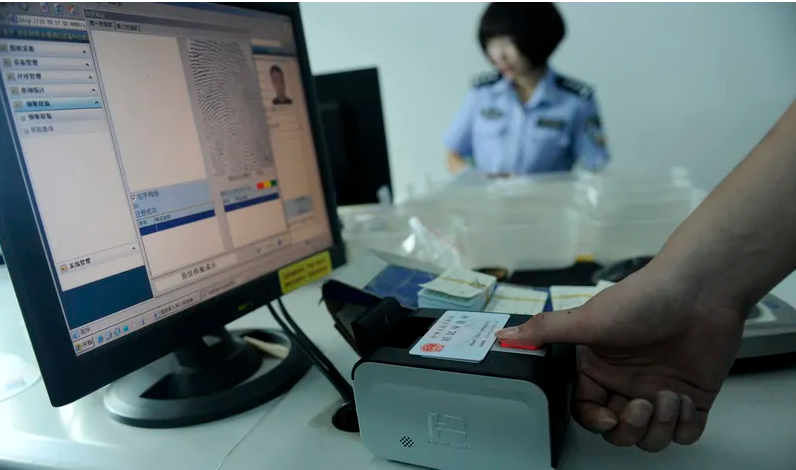
In 350 BCE, China’s earliest identity certificate (known as 照身帖) only included a hand-carved portrait. It was invented by the scholar Shang Yang and issued by the Qin government in the Warring States period (475 – 221 BCE). It was a flat bamboo board with the holder’s name, occupation, portrait, and official seal carved on it. Everyone needed one to pass checkpoints on the road or check into guesthouses.
In the Tang dynasty (618 – 907), the small metal fish tally was divided into left and right halves that fit together. One half was left with the imperial court; while the official carried the right half — putting them together could prove their identity. In the Ming dynasty (1368 – 1644), a similar system saw officials identify themselves with a small plate of animal bone or ivory (known as a 牙牌) hung at their waist.
When China began market reforms in 1978, people gained more freedom to move around. But traveling on trains, staying in hotels, or moving job locations meant presenting one’s hukou and an official letter from an employer, making it inconvenient and inefficient for workers to migrate. The first generation of ID cards introduced in 1984 was partly meant to make the labor market more flexible and people’s lives more convenient. The following year they became mandatory (强制性的) for all over the age of 16.
By 1988, the cards were being printed rather than hand-written. But they remained easy to counterfeit (伪造). In 1999, a teacher surnamed Wang was hit with a 2,000-yuan phone bill despite not owning a phone. In 2001, a Beijing resident surnamed Liang said she had received letters from telecommunications companies after someone used her lost ID card to buy 30 mobile phones.
From the 1990s, efforts began to make ID cards, now essential for everyday life and containing sensitive information, more secure. Since 1999, each citizen has been assigned a unique 18-digit citizen number to go with their card. In 2004, the government launched the second generation of ID cards including digital anti-fraud measures. To fight identity theft, the ID card system began recording fingerprint information in 2013.
1.What was used to prove officials’ identity in 620?
A A flat bamboo board.
B A fish-shaped tally.
C A hand-carved portrait.
D A small plate of ivory.
解析:选B。B细节理解题。根据第二段第一句“In the Tang dynasty (618 – 907), the small metal fish tally was divided into left and right halves that fit together.”可知,在唐朝时期,鱼符作为官员身份的证明。故选B。
2.What was one of the purposes of introducing the first generation of ID cards?
A To ensure teenagers’ security.
B To reduce people’s moving around.
C To make people rely more on public transport.
D To make it convenient for employees to migrate.
解析:选D。D细节理解题。根据第三段中的“The first generation of ID cards introduced in 1984 was partly meant to make the labor market more flexible and people’s lives more convenient.”可知,1984年推出的第一代身份证在一定程度上是为了使劳动力市场更加灵活,改变劳动者流动不便和低效的现状,使人们的生活更加便利。故选D。
3.With the examples in Para 4, the writer intends to show that _____________.
A millions of ID cards were lost or stolen each year
B so many modern services required identification in China
C crime involving fake or stolen ID cards became worryingly common
D so much of modern Chinese life is digital and integrated with people’s ID
解析:选C。C推理判断题。根据第四段中的“But they remained easy to counterfeit.”可知,这些身份证卡片是打印出来的,但它们仍然很容易伪造。接着作者举了两个涉及伪造或被盗身份证的欺诈行为的例子,因此作者列举这两个例子是为了说明涉及伪造或被盗身份证的欺诈行为变得普遍的令人担忧。故选C。
4.The text is mainly organized in order of ____________.
A effectiveness
B complexity
C importance
D time
解析:选D。D推理判断题。根据文章多次出现的时间点可知,本文是按照时间发展顺序写的。故选D。